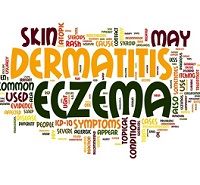Article
Atopic Dermatitis Linked to Staph Colonization
Author(s):
Staph is often present in patients with atopic dermatitis, study finds.

Patients with atopic dermatitis are more likely than healthy controls to have Staphylococcus aureus colonization according to a new meta-analysis of 95 studies involving over 5,000 subjects.
The meta-analysis conducted by lead author Joan Totté, MD., Department of Dermatology, Erasmus University Medical Centre, Rotterdam, the Netherlands and colleagues was posted on-line July 5 in the British Journal of Dermatology.
This first systematic summary of S. aureus colonization patterns in patients with atopic dermatitis reveals these patients at increased risk for colonization of both lesional and nonlesional skin and the nose.
The pooled prevalence of S. aureus among patients was 70 percent for lesional skin, 39 percent for nonlesional skin and 62 percent for the nose. The likelihood of the patients having S. aureus colonization was substantially greater than healthy controls [Odds Ratio (OR) 19.74, 95% confidence interval (CI), 10.88-35.81 (range)], with the differences smaller but significant in nonlesional skin [OR 7.77, 95% CI, 3.82-15.82) and in the nose [OR 4.50, 95% CI, 3.00-6.75).
Not all of the studies included in the meta-analysis compared patients to healthy controls, or assessed colonization at all three sites. There was also "considerable" heterogeneity among the studies, the investigators pointed out, in methodology, severity of disease, age of patients, and in overall quality as assessed with the Newcastle-Ottawa Scale.
Despite the different data sets from varied sources, however, the meta-analysis findings do support the possibility that S. aureus contributes to the pathogenesis of atopic dermatitis, and the investigators anticipate that strategies to decrease skin and nasal S. aureus load could benefit some patients.
Totté and colleagues acknowledge that there are multiple factors that underlie atopic dermatitis, and that use of broad spectrum antibiotics for S. aureus can disrupt healthy microbiota and produce resistant strains. They note, however, studies with antibacterial interventions including mupirocin (Bactroban, GlaxoSmithKline) or bleach baths have shown reduction in both symptom severity and S. aureus load. They suggest the possibility that some patients will benefit from selective antibacterials in development such as the recombinant endolysins patterned after the enzymes of "bacteria killer" bacteriophage viruses.
"Additional examination of colonization in patients with different phenotypes (sensitized and nonsensitized, early onset vs. late onset) might provide insight into the type of patients who are likely to benefit most from targeted therapy against S. aureus," Totté and colleagues commented.





